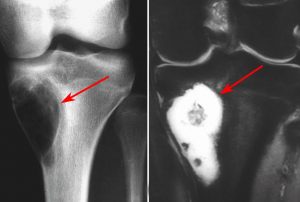Alter the Brain and Memory Consolidation During Sleep with Meditation
By John M. de Castro, Ph.D.
“meditation. The deep relaxation technique has been shown to increase sleep time, improve sleep quality, and make it easier to fall (and stay) asleep.” – Sleep Foundation
We spend about a third of our lives in sleep, but we know very little about it. It is known that sleep is not a unitary phenomenon. Rather, it involves several different states that can be characterized by differences in physiological activation, neural activity, and subjective experiences. These changes can be recorded from the scalp with an electroencephalogram (EEG).
In the waking state the nervous system shows EEG activity that is termed low voltage fast activity. The electrical activity recorded from the scalp is rapidly changing but only with very small size waves. When sleep first occurs, the individual enters into a stage called slow-wave sleep, sometimes called non-REM sleep. The heart rate and blood pressure decline even further and the muscles become very soft and relaxed. In this state the EEG shows a characteristic waveform known as the theta rhythm, which is a large change in voltage recorded that oscillates at a rate of 4 to 8 cycles per second. As the individual goes even deeper into sleep something remarkable happens as the individual enters into rapid eye movement sleep (REM sleep). Here the muscles become extremely inhibited and flaccid, but the eyes move rapidly under the closed eyelids as if the individual was looking around. At the same time the heart rate and blood pressure increase and become very variable and sometimes very high.
Sleep has also been shown to be involved in memory consolidation. “Sleep is thought to strengthen information learned during the day, to select which experiences are best remembered and which are best forgotten, and to assimilate new knowledge into existing autobiographical networks.” It has been shown that mindfulness training, including meditation practice, affects sleep and tends to improve sleep and reduce insomnia. It has also been shown to affect memory. But there is need to further investigate the effects of meditation practice, particularly long-term meditation practice, on brain activity during sleep and wakefulness and memory consolidation to begin to understand the mechanisms by which meditation practice affects memory, sleep, and wakefulness.
In today’s Research News article “Different Patterns of Sleep-Dependent Procedural Memory Consolidation in Vipassana Meditation Practitioners and Non-meditating Controls.” (See summary below or view the full text of the study at: https://www.frontiersin.org/articles/10.3389/fpsyg.2019.03014/full?utm_source=F-AAE&utm_medium=EMLF&utm_campaign=MRK_1232595_69_Psycho_20200204_arts_A), Solomonova and colleagues recruited healthy young adult (aged 18-35 years) practitioners of Vipassana meditation and matched non-meditators for an afternoon nap study. The participants were measured for body awareness. On one day they engaged in a 90-minute nap preceded by either a 10-minute meditation or a 10-minute relaxation period. During the nap their EEG was recorded. The participants reported on their dreams when awoken halfway into and at the end of the nap. Before and after the nap the participants engaged in a 5-minute session measuring balance with a Nintendo game “Balance Bubble.”
They found that the meditators had significantly greater body awareness than the non-meditators. In addition, for meditators only, the higher the body awareness the better the performance on the balance task. Hence meditation practice is associated with better awareness of the body which was in turn related to their balance.
There were no significant differences between the groups in improvement on the balance task after the nap or in sleep structure as assessed with the EEG during the nap. Interestingly, the greater the lifetime meditation practice, the less time spent in slow-wave (non-REM) sleep. For the meditation group but not the controls, the greater the density of slow-wave (non-REM) sleep spindles during the nap, the greater the improvement in the balance task. On the other hand, for the non-meditators the greater the time spent in REM sleep, the greater the improvement in the balance task.
These findings suggest that memory consolidation for a balance task over a nap occurred in concert with different sleep architecture for the meditators and non-meditators. This suggests the meditation practice produce neuroplastic changes in the brain that resulted in different memory consolidation mechanisms during sleep. These are complex changes that suggest different neural processing of information during sleep in meditators.
So, alter the brain and memory consolidation during sleep with meditation.
“Given the many health concerns pertaining to sleep aid medication use in older adults,” he added, “mindfulness meditation appears to be a safe and sensible health promoting practice to improve sleep quality.” – David Black
CMCS – Center for Mindfulness and Contemplative Studies
This and other Contemplative Studies posts are also available on Google+ https://plus.google.com/106784388191201299496/posts and on Twitter @MindfulResearch
Study Summary
Solomonova E, Dubé S, Blanchette-Carrière C, Sandra DA, Samson-Richer A, Carr M, Paquette T and Nielsen T (2020) Different Patterns of Sleep-Dependent Procedural Memory Consolidation in Vipassana Meditation Practitioners and Non-meditating Controls. Front. Psychol. 10:3014. doi: 10.3389/fpsyg.2019.03014
Aim: Rapid eye movement (REM) sleep, non-rapid eye movement (NREM) sleep, and sleep spindles are all implicated in the consolidation of procedural memories. Relative contributions of sleep stages and sleep spindles were previously shown to depend on individual differences in task processing. However, no studies to our knowledge have focused on individual differences in experience with Vipassana meditation as related to sleep. Vipassana meditation is a form of mental training that enhances proprioceptive and somatic awareness and alters attentional style. The goal of this study was to examine a potential role for Vipassana meditation experience in sleep-dependent procedural memory consolidation.
Methods: Groups of Vipassana meditation practitioners (N = 22) and matched meditation-naïve controls (N = 20) slept for a daytime nap in the laboratory. Before and after the nap they completed a procedural task on the Wii Fit balance platform.
Results: Meditators performed slightly better on the task before the nap, but the two groups improved similarly after sleep. The groups showed different patterns of sleep-dependent procedural memory consolidation: in meditators, task learning was positively correlated with density of slow occipital spindles, while in controls task improvement was positively associated with time in REM sleep. Sleep efficiency and sleep architecture did not differ between groups. Meditation practitioners, however, had a lower density of occipital slow sleep spindles than controls.
Conclusion: Results suggest that neuroplastic changes associated with meditation practice may alter overall sleep microarchitecture and reorganize sleep-dependent patterns of memory consolidation. The lower density of occipital spindles in meditators may mean that meditation practice compensates for some of the memory functions of sleep.









